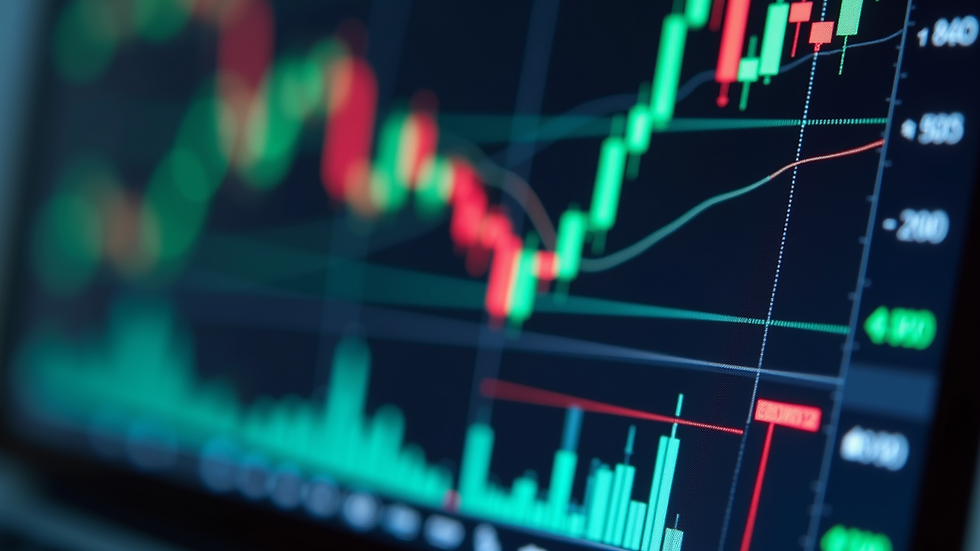Gold Hits $3,000 – Why This Is The Trade of the Quarter
- forex368

- Jul 11
- 3 min read
Positioning for a Sharp Correction in Gold Prices
Published by Forex368.com | March 23, 2025
Gold has officially crossed the $3,000 threshold, capping off a historic rally. From its December 2024 low of $2,620, gold has soared over 17%, driven by geopolitical uncertainty, inflation fears, and aggressive tariff policies from President Trump. But with price action showing signs of exhaustion, this rally may be running on fumes.
What's Driving the Surge?
Several overlapping macroeconomic forces have fueled gold's meteoric rise:
Trump’s Tariff Policies: New tariffs on imports from China, Canada, and Mexico (20–25%) have heightened fears of global trade disruption.
Inflation Expectations: Rising consumer prices and uncertainty over the Fed’s policy stance have drawn investors into inflation hedges.
Weaker U.S. Dollar: Tariffs and fiscal strain are pressuring the greenback, making gold more attractive.
Central Bank Demand: Global central banks purchased over 1,000 tonnes of gold in 2024 and remain active in 2025.
Geopolitical Tensions: Ongoing conflicts in the Middle East and Ukraine continue to elevate demand for safe-haven assets.
Despite these drivers, gold's technical setup, momentum indicators, and historical trends now suggest that a sharp correction may be near.
Technical Signs of Exhaustion
Gold recently reached a high of $3,065 before retracing back toward $3,028. Fibonacci retracement levels from the February low ($2,846) to the recent high ($3,036) reveal potential support zones:
23.6% retracement – $3,012
38.2% retracement – $2,980
50.0% retracement – $2,955
These levels mark potential pullback targets. A deeper correction toward $2,900 or even $2,830 is within reason given the overbought RSI levels and price divergence from Bollinger Bands.

Historical Corrections in Gold Prices
History tells us gold doesn’t rally indefinitely. Key corrections in the past include:
1980 – 65% drop from $850 to $300 as Fed raised rates to 20%
1996–2001 – 38% drop driven by central bank sales and stock market boom
2008 – 30% drop from $1,000 to $700 amid liquidity crunch
2011–2015 – 45% drop from $1,920 to $1,050 with rising rates and USD strength
2020–2021 – 19% drop post-COVID rally
With gold now up 38% in the past year and 14% YTD, history suggests a 10–15% correction is overdue.
“While a total collapse is unlikely, a significant correction is within reach.”— Forbes, March 19, 2025Source
“Gold has entered overbought territory. As liquidity tightens or if the USD strengthens, expect a short-term drop.”— Bloomberg Commodities Analyst
“At $3,000, gold is pricing in peak pessimism. Even modest shifts in risk appetite or rate expectations could unwind this rally.”— Reuters Metals Desk
“Historical gold cycles suggest 10–15% corrections are common after extended rallies, especially when inflation expectations plateau.”— MarketWatch Technical Insight
What Could Trigger the Pullback?
While the macro backdrop still supports long-term bullish gold fundamentals, short-term catalysts for a correction include:
USD Recovery: Any rebound in the dollar or rise in U.S. Treasury yields would pressure gold.
Profit-Taking: After such a strong rally, traders may lock in gains.
Repricing of Risk: If geopolitical fears cool or data improves, safe-haven demand may fade.
Fed Surprise: A more hawkish tone or earlier rate hike hints could flip sentiment quickly.
Conclusion: Gold’s Rally Is Ripe for Reversal
Gold at $3,000 is a major milestone—but also a potential top. While long-term holders may see further upside over the coming years, traders should brace for a meaningful correction in the coming weeks. The setup for a short trade is building.
In our upcoming email alert, we’ll break down how traders can capitalize on this move with calculated risk using leverage, proper margin management, and realistic profit targets.
For questions or early trade setup guidance, contact us at info@forex368.com:
Disclaimer: Trading leveraged products involves high risk and may result in losses exceeding your deposit. Always trade responsibly.




